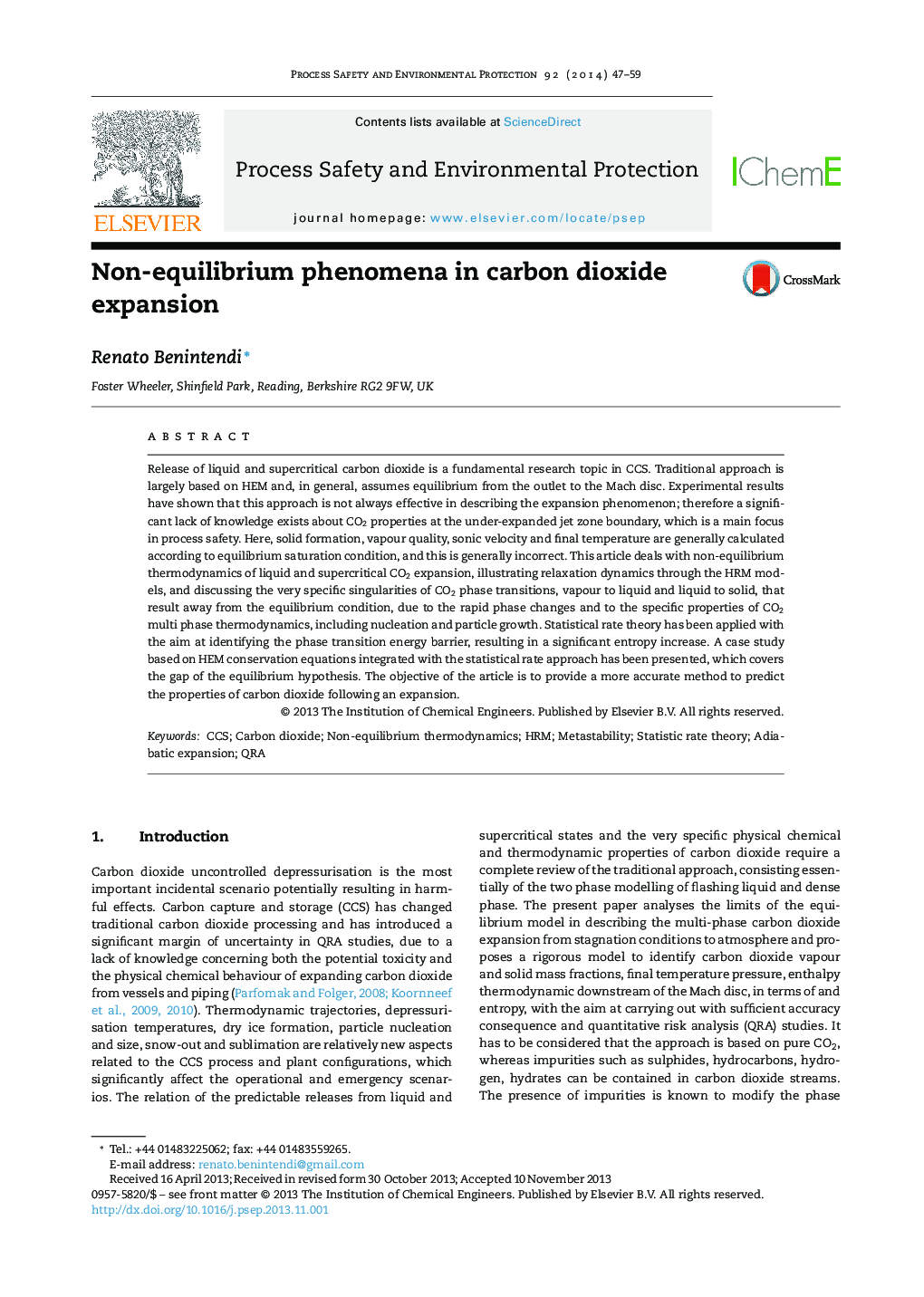| Article ID | Journal | Published Year | Pages | File Type |
|---|---|---|---|---|
| 10373884 | Process Safety and Environmental Protection | 2014 | 13 Pages |
Abstract
Release of liquid and supercritical carbon dioxide is a fundamental research topic in CCS. Traditional approach is largely based on HEM and, in general, assumes equilibrium from the outlet to the Mach disc. Experimental results have shown that this approach is not always effective in describing the expansion phenomenon; therefore a significant lack of knowledge exists about CO2 properties at the under-expanded jet zone boundary, which is a main focus in process safety. Here, solid formation, vapour quality, sonic velocity and final temperature are generally calculated according to equilibrium saturation condition, and this is generally incorrect. This article deals with non-equilibrium thermodynamics of liquid and supercritical CO2 expansion, illustrating relaxation dynamics through the HRM models, and discussing the very specific singularities of CO2 phase transitions, vapour to liquid and liquid to solid, that result away from the equilibrium condition, due to the rapid phase changes and to the specific properties of CO2 multi phase thermodynamics, including nucleation and particle growth. Statistical rate theory has been applied with the aim at identifying the phase transition energy barrier, resulting in a significant entropy increase. A case study based on HEM conservation equations integrated with the statistical rate approach has been presented, which covers the gap of the equilibrium hypothesis. The objective of the article is to provide a more accurate method to predict the properties of carbon dioxide following an expansion.
Related Topics
Physical Sciences and Engineering
Chemical Engineering
Chemical Health and Safety
Authors
Renato Benintendi,
